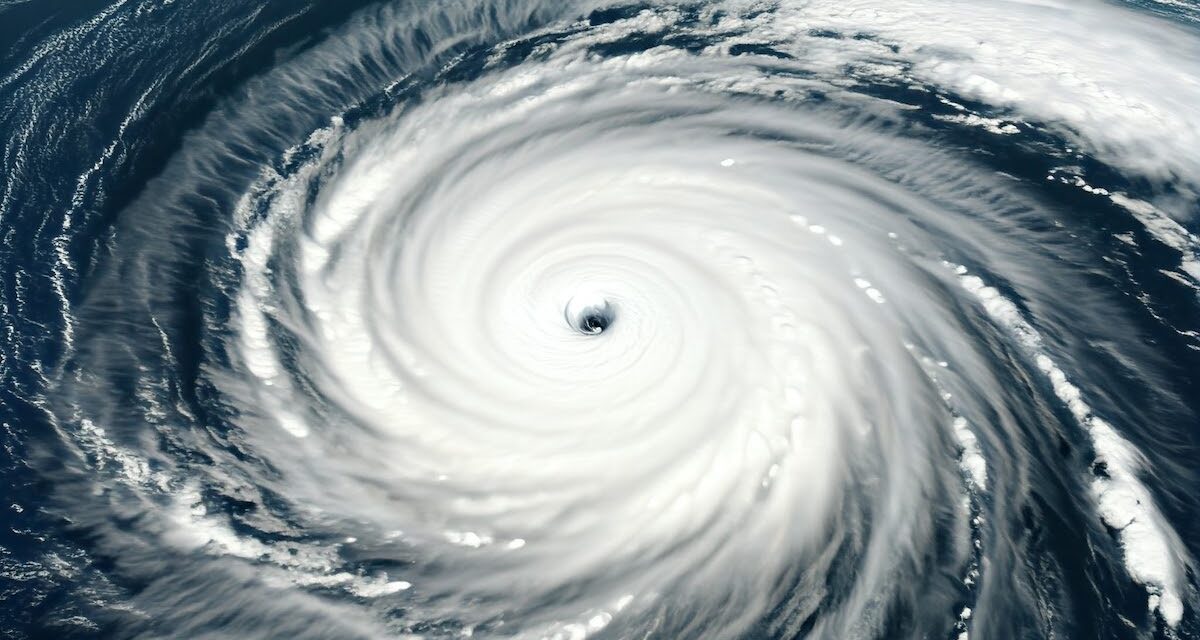Last updated on March 9th, 2025 at 03:19 pm
Considering a move to the South East but major hurricanes give you pause? It’s best that you understand where “tropical cyclones” occur most. Did you know that more hurricanes hit New York than Mississippi? It’s true. While the Gulf Coast states receive their fair share, most come from the Atlantic Ocean and many hit the Atlantic Coast. It’s best to be fully informed before you decide where to move.
This article was written a couple of weeks before the recent hurricanes that hit Florida and then moved into the mid-Atlantic states. I did not include them in the list below as information is still coming in about the damage. Unfortunately, those two devastating hurricanes just add to the point of this article.
One thing the 2024 hurricanes have taught us is that hurricanes are not just dangerous to coastal states, they drive inland and continue for hundreds of miles. In the case of the hurricane that landed in Florida and went into North Carolina, the greatest damage was not in Florida.
To be sure, no one wants to experience a major hurricane. And hurricanes do land in Mississippi but not as frequently or as severely as in several other states which are popular magnets for new Southern residents. This article will “clear” the air.
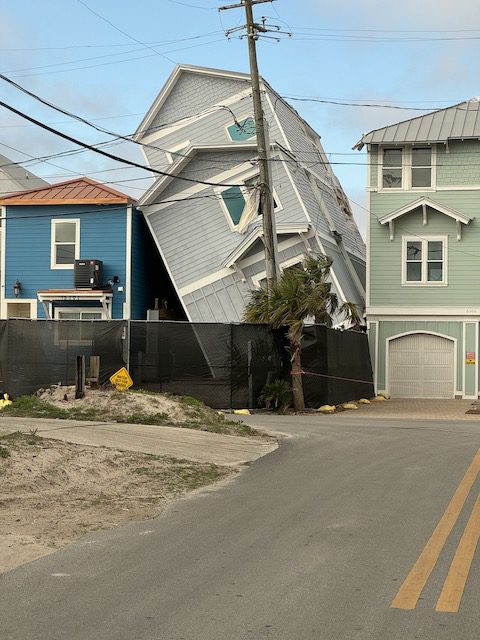
Regardless of where you move in the United States, the potential for natural disasters exists. Fires and earthquakes in California, volcanoes in Hawaii, Oregon, and Washington state. Tornadoes in the Midwest.
Snow storms in the upper midwest and East. Flooding in many areas of the country. It seems no matter where you may want to live, you have to be prepared for some type of natural disaster. There are many hurricane states. Tropical systems can extend from the Texas-Mexico border around the Gulf of Mexico and up to Maine.
Hurricane Categories
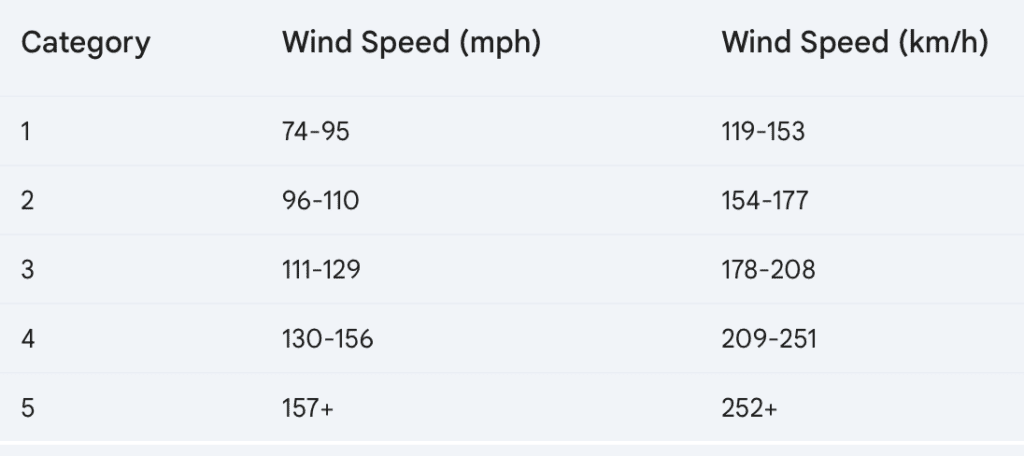
Top 10 states for the last 20 years for hurricane activity
- Florida: Florida continues to be the most impacted state, with numerous hurricanes making landfall along its extensive coastline.
- Louisiana: Louisiana has experienced several devastating hurricanes, including Hurricane Katrina, which caused widespread damage.
- Texas: Texas, particularly the Gulf Coast region, has been frequently hit by hurricanes.
- North Carolina: North Carolina’s Outer Banks have been vulnerable to hurricane strikes.
- South Carolina: South Carolina’s coastal cities, such as Charleston, have faced hurricane threats.
- Alabama: Alabama’s Gulf Coast region has been impacted by hurricanes.
- Georgia: Georgia’s coastal areas, including Savannah, have experienced hurricane landfalls.
- Mississippi: Mississippi’s Gulf Coast has been affected by hurricanes.
- New York: While less frequent than in the southern states, New York has experienced hurricanes, particularly in the Long Island region.
- New Jersey: New Jersey’s coastal areas have also been impacted by hurricanes.
If you were asked about where Mississippi rates regarding hurricanes, you would probably put it above New York, Alabama, and most other states. You may even list it just under Florida. You would be wrong.
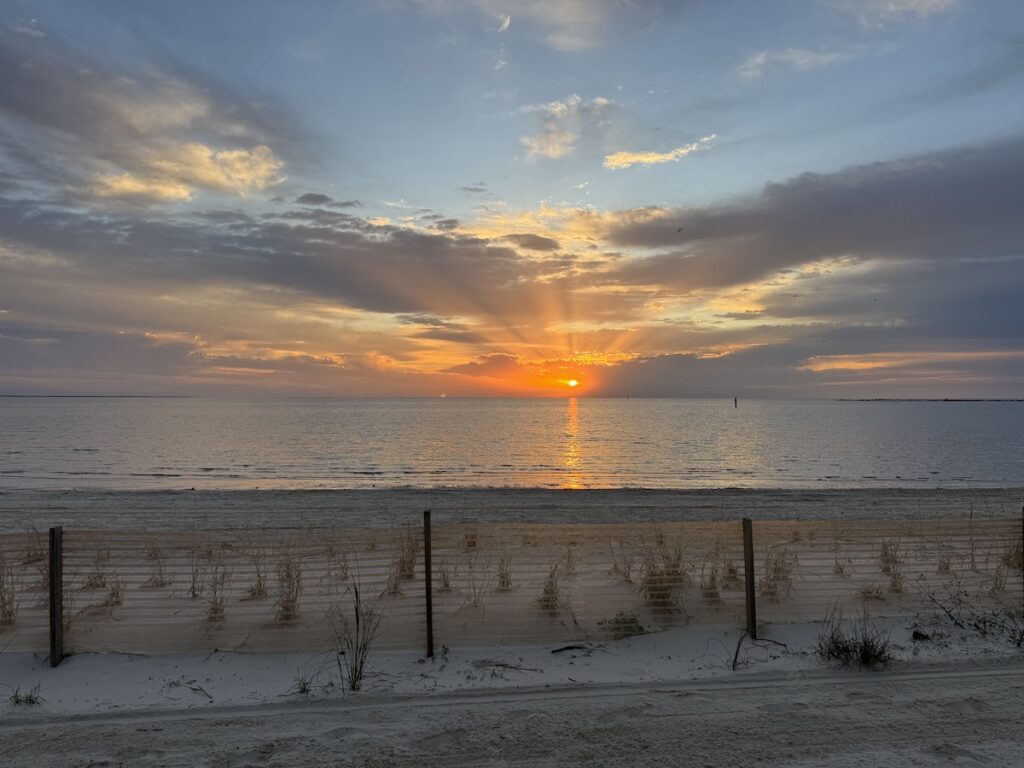
Most destructive hurricanes in the last 20 years
The Florida Peninsula is the hardest hit and the most frequently hit area for hurricane activity The list below indicates the most destructive hurricanes in the last 20 years
- Hurricane Katrina (2005): This devastating Category 3 hurricane made landfall in Louisiana, causing catastrophic flooding in New Orleans and surrounding areas. It is considered one of the most destructive hurricanes in U.S. history.
- Hurricane Harvey (2017): Harvey made landfall in Texas, bringing unprecedented rainfall and causing widespread flooding in Houston and other parts of the state. It was the costliest natural disaster in U.S. history.
- Hurricane Maria (2017): Maria devastated Puerto Rico, causing extensive damage to infrastructure and leaving the island without power for months. It was the deadliest hurricane to hit the Caribbean in nearly a century.
- Hurricane Sandy (2012): Sandy made landfall in New Jersey and New York, causing significant coastal flooding and damage to infrastructure. It was the largest Atlantic hurricane on record.
- Hurricane Ike (2008): Ike made landfall in Texas, causing widespread damage along the Gulf Coast. It was the third-costliest hurricane to hit the United States.
- Hurricane Florence (2018): Florence made landfall in North Carolina, causing significant flooding and damage to the state.
- Hurricane Michael (2018): Michael made landfall in Florida as a Category 4 hurricane, causing widespread damage and destruction.
- Hurricane Irma (2017): Irma made landfall in Florida as a Category 4 hurricane, causing significant damage to the state.
- Hurricane Wilma (2005): Wilma made landfall in Florida as a Category 3 hurricane, causing widespread damage.
Florida holds the title
Florida takes the title for the most hurricane-prone state with 3 while Texas follows with 2 in second place. Note that Hurricane Sandy was very damaging in New York and New Jersey. People often think of hurricanes as a Southern thing. In 2024, Hurricane Kyle hit California.
That was a big surprise. A friend of mine who bought a house on the Mississippi Gulf Coast moved after his wife found there were hurricanes in the area. They moved to Southern California and then Hurricane Kyle hit. Ironic.
Living in an area where tropical storms are common does not mean they will cause major damage. Yes, there could be a storm surge but most people are prepared for that. Wind gusts can blow down trees and take some shingles off houses.
People can live with this. The hardest thing is power outages which people mitigate with generators. When you live in an area with a threat of hurricanes, you prepare. Newer construction standards have helped reduce catastrophic damage.
You can avoid the worst by not living in low-lying areas such as in New Orleans where part of the city is actually underwater. A hurricane impact can be managed if you have a good roof, trees are cut around the house and you have prepared any low areas on your property.
Well-built homes suffer the least damage
The most damage seems to occur to homes that are not well-built and/or are not in good condition. The following is a list of what can make a home more resilient against hurricanes and more:
Building a home on the Gulf Coast requires a resilient design that addresses the specific environmental challenges of the area, such as humidity, hurricanes, flooding, and salt air corrosion. Here are some of the best construction practices:
1. Foundation and Elevation
- Elevate the foundation above the base flood elevation (BFE) to avoid water damage. Options like pier and beam foundations or elevated slabs are common in flood-prone areas.
- Use flood vents in the foundation to allow water to flow through without putting excessive pressure on the structure.
2. Wind-resistant roofing and Windows
- Install hurricane-rated roofing with strong anchors to withstand high winds. Metal roofing is a popular choice because of its durability.
- Use impact-resistant windows and doors rated for hurricanes. Storm shutters or roll-down options can provide extra protection.
3. Moisture Control and Ventilation
- Ensure adequate insulation and moisture barriers to prevent mold and mildew. Vapor barriers in walls, ceilings, and flooring help keep out Gulf Coast humidity.
- Invest in a high-quality HVAC system with a dehumidifier to maintain a comfortable indoor environment.
- Design with good airflow in mind, including roof vents and soffit ventilation.
4. Corrosion-Resistant Materials
- Use materials like stainless steel, vinyl, or aluminum for coastal homes, which are less prone to rusting and corrosion due to salt air.
- For structural framing, consider treated wood or steel for added durability.
5. Storm-resistant siding and Finishes
- Fiber cement siding is a popular option, as it is durable, fire-resistant, and handles moisture well.
- Stucco finishes or specialized masonry coatings also resist wind and moisture, making them good options for exterior walls.
6. Sealed Garage Doors
- Ensure garage doors are wind-rated and well-sealed. A reinforced door helps prevent blowouts during strong winds.
7. Landscape for Drainage
- Design landscaping with flood management in mind, such as using native plants, permeable paving, and ensuring there’s effective drainage around the property to direct water away from the home’s foundation.
8. Smart Home and Monitoring Systems
- Installing a smart home system can allow you to monitor conditions remotely and respond quickly, especially if you need to manage temperature, humidity, or storm preparation remotely.
9. Roof Construction
- Install a high MPH roof on your house if you are building new. If your roof is getting older, be sure to install a roof that exceeds current FEMA standards for wind damage. Read this article.
These construction approaches can help ensure your Gulf Coast home stands up to environmental challenges while providing a comfortable living space.
I mentioned trees. Fallen trees cause lots of damage, more than flood damage in typical hurricanes. Trees fall on power lines, and houses and block roads. There are lots of trees in areas that can be affected by a destructive hurricane. Many of these issues can be mitigated by removing dead trees and large limbs.
Fortunately, thanks to the National Hurricane Center, people have an adequate warning to leave when a tropical depression begins to form. If you live in an area where hurricanes can form, you know to watch the news during the Atlantic Hurricane Season which runs through the summer until about November 1.
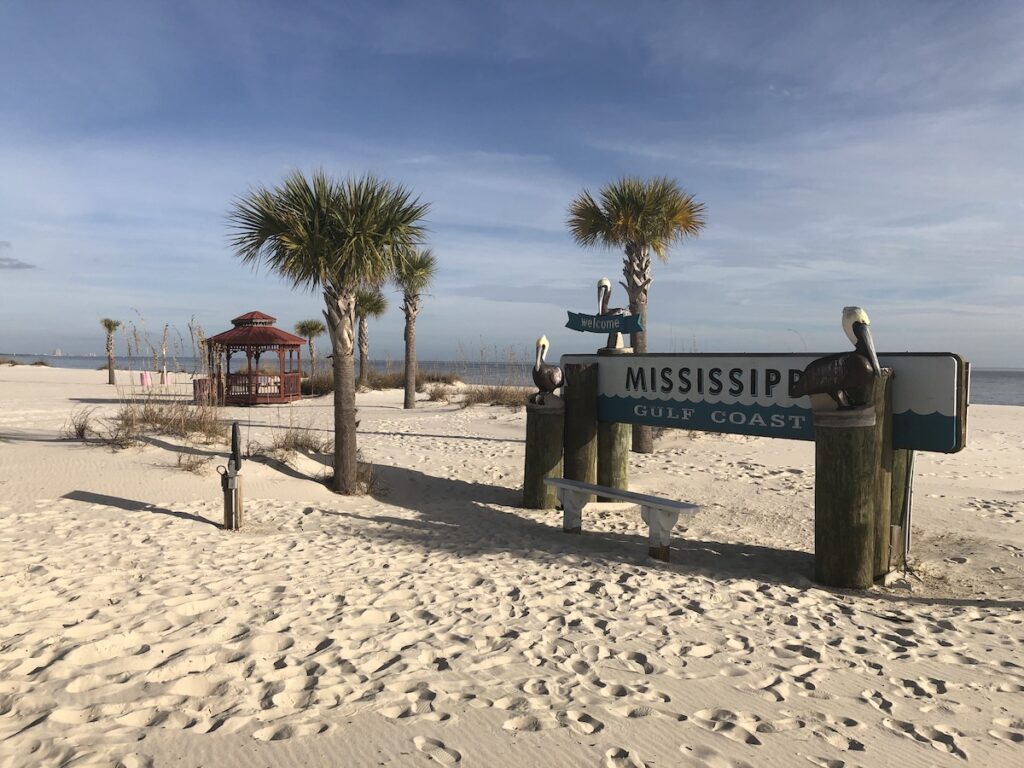
Natural disasters compared
The following lists types of natural disasters and some information about warnings, damage, and more. This may help put hurricanes in perspective with other types of natural disasters:
- Hurricanes: Hurricanes are often accompanied by strong winds, heavy rainfall, and storm surges. They can cause widespread damage to property and infrastructure and can be difficult to predict with complete accuracy.
- Tornado: Tornadoes are characterized by intense winds and can cause significant localized damage. They can form quickly and without much warning, making them especially dangerous.
- Wildfire: Wildfires can burn through vast areas of land, destroying property, and endangering lives. They are often influenced by weather conditions, making them difficult to predict and control.
- Earthquake: Earthquakes can cause widespread damage to infrastructure and can trigger other hazards such as tsunamis and landslides. They are unpredictable and can occur without warning.
- Flooding: Flooding can be caused by heavy rainfall, dam failures, or other factors. It can lead to property damage, displacement, and even loss of life.
- Storm Surge: Storm surge is the rise in sea level caused by a storm, often associated with hurricanes. It can cause severe coastal flooding and damage.
Affects
Warning, hurricanes and tornadoes can sometimes be predicted with some accuracy. However, the intensity and exact path of these storms can be difficult to forecast. Earthquakes and wildfires are generally more difficult to predict, as they can occur without warning. Flooding and storm surges are often associated with other weather events, such as hurricanes or heavy rainfall, which can provide some warning.
Hurricanes, earthquakes, and wildfires can cause the most extensive damage. However, the severity of damage depends on factors such as the intensity of the event and the vulnerability of the affected area. Tornadoes can also cause significant localized damage.
Occurrence, hurricanes, and wildfires are relatively common in certain regions. Earthquakes can occur anywhere, but they are more frequent in certain seismic zones. Flooding can occur in many areas, but the frequency and severity depend on local geography and weather patterns. Tornadoes are most common in the United States, but they can occur in other parts of the world.
Ultimately, the most dangerous natural disaster depends on the specific circumstances and the region in question. It’s important to be prepared for a variety of hazards and to follow local emergency management guidelines.
Back to our discussion about moving to the South East. Florida is a hot destination for people from the Northern part of the country. I would suggest that you take a look at the Mississippi Coast. Specifically the Mississippi Gulf Coast. As far as hurricane risk, it’s way down the list below New York and way down the list from Florida, particularly South Florida.
Look at the NOAA map below for the number of hurricane hits since 1900. Yes, the Mississippi Gulf Coast does have hurricane-prone areas but not as many as other “hot” destinations in the Southeast.
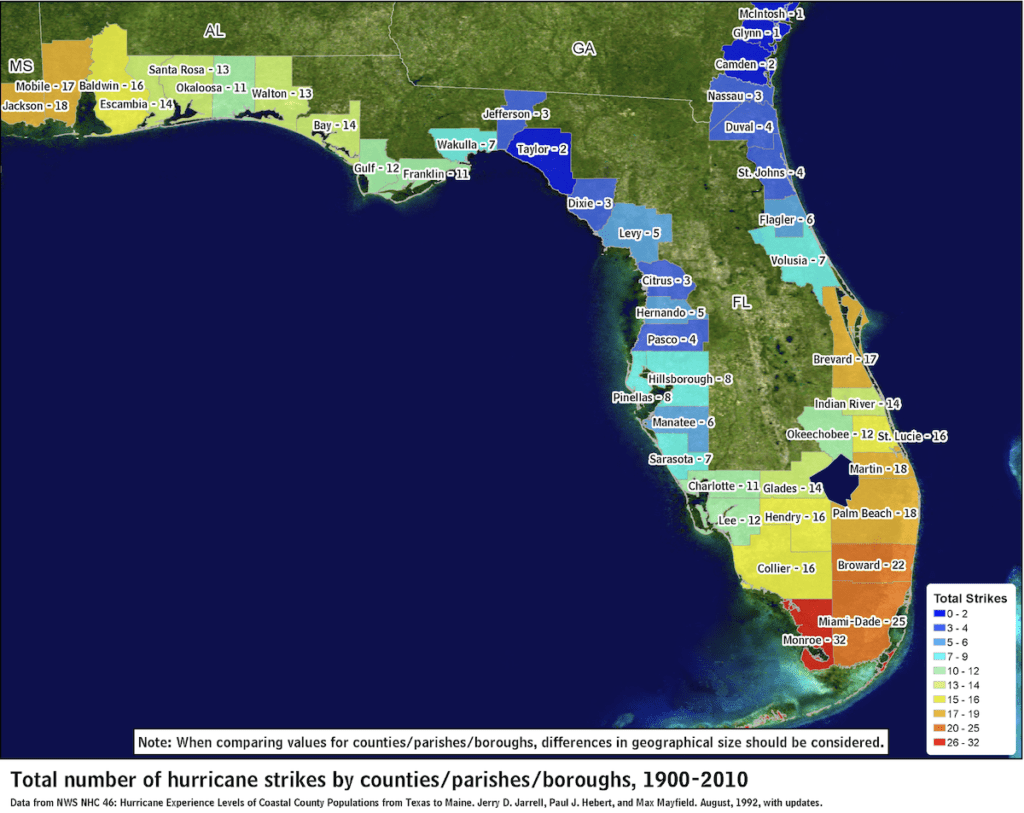
Hurricane Katrina
The Mississippi Gulf Coast has experienced several landfall hurricanes. It participated in Hurricane Katrina which was the most destructive in history. It’s been 20 years and only minor hurricanes have made landfall in the area.
Since Katrina as mentioned above, building codes have changed more than once to require better-built homes that can withstand very high wind speeds. Insurance companies have been on a tear to get people to cut tree limbs from rooftops.
Standards for higher wind velocity have been implemented for replacement roofs. Insurance companies inspect homes now on a frequent basis to ensure nothing in the yard e.g. an improperly secured storage shed can become a missile that can damage a house.
New utilities are underground reducing the number of downed utility poles. In recent years water diversion, impoundment ponds, and other features have been added to reduce the potential for flooding.
Hurricane Hunters
The 403rd Wing located at Keesler AFB is one of two hurricane hunting groups in the United States. Teams fly these aircraft right into the storms and they provide advanced warning of the speed and other details of the storm before and after it becomes a hurricane.
If you are or will be in the Biloxi, Mississippi area, you can request a tour of their operations. Learn more by clicking on the link here: https://www.403wg.afrc.af.mil/News/Tag/1386/hurricane-hunters/

Moving to the Mississippi Gulf Coast
Moving to the Mississippi Gulf Coast is a decision you can make with some confidence that you can find a home that is located in an area that has undergone hurricane mitigation efforts. True, wind damage could be possible but it’s less likely to cause damage now than ever before.
Compare the highest number of hurricanes in Florida to Mississippi with nearly the lowest number. If you are considering the difference between the two states based on weather alone, your decision is already made. If you want a beautiful place to live without the crowds and a low cost of living, once again your decision is already made for you.
The Mississippi Gulf Coast should be on your radar. People are finding that our Southern way of life suits them and they are moving here from many high-cost areas with a long list of social issues they disagree with. Read this article for more insight
I bought my house on the Mississippi Gulf Coast ten years ago and have experienced three hurricanes. None of them were catastrophic or required evacuation. Some roofs and fences were damaged around the area during one of them. During that time there were major hurricanes in other areas. Just like buying stocks based on past performance is a mistake, using my experience alone to make a decision is not enough.
Where to buy your new home?
Before you decide to buy your house on the Mississippi Gulf Coast, you need to understand a few things. Homes located near the beach or a river/bayou may require you to purchase flood insurance (if financed). Check the FEMA flood zone map. Mortgage companies do not require flood insurance for houses located in a FEMA “X” zone.
Check the FEMA flood map for a specific address here: https://msc.fema.gov/portal/search
Most buyers will be required to buy wind and hail insurance. The further from the beach the lower the cost of this coverage generally. A new or newer roof will get a lower rate. If you buy a home on or just off of the beach, your rates may be the highest. People building or buying houses on or near the beach are willing to pay the insurance cost. If you are buying on a budget, ask your real estate agent to provide you with some guidance about insurance costs.
Want to know even more about housing on the Mississippi Gulf Coast or hurricanes check out these references:
Real Estate on the Mississippi Gulf Coast
Short-Term Rental Mississippi Gulf Coast
Please leave comments, we love to hear from you about our articles.
Discover more from RetireCoast.com
Subscribe to get the latest posts sent to your email.

